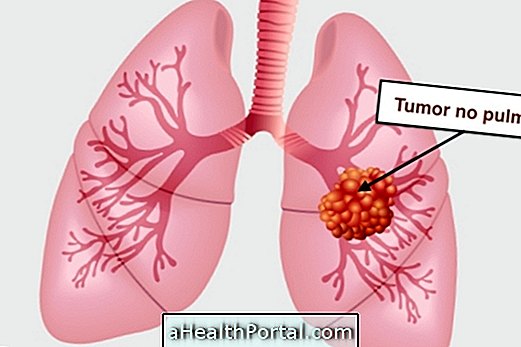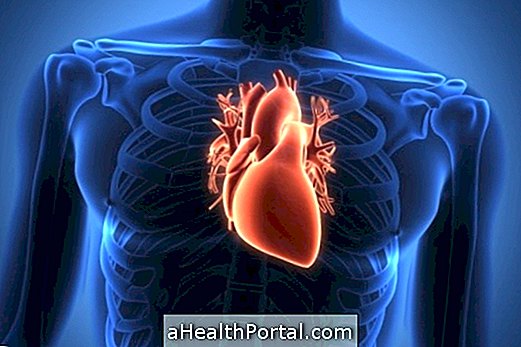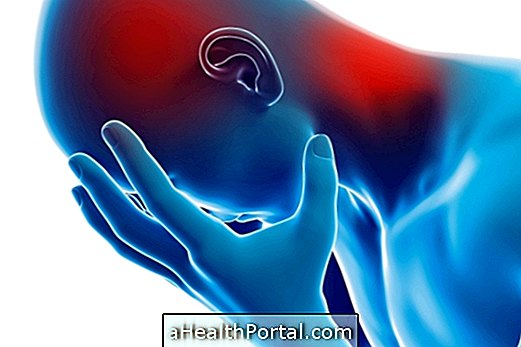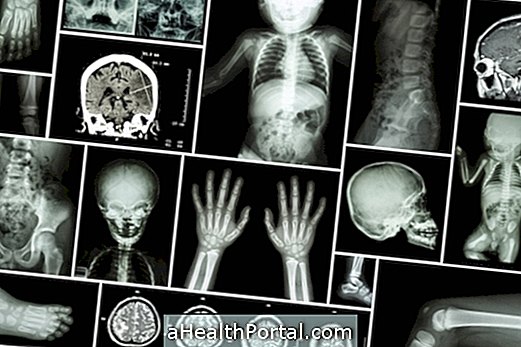The symptoms of lung cancer are non-specific and common to other respiratory diseases such as emphysema, bronchitis and pneumonia. Thus, lung cancer is characterized by:
- Dry and persistent cough;
- Difficulty in breathing;
- Shortness of breath;
- Decreased appetite;
- Weight loss;
- Hoarseness;
- Back pain;
- Pain in the chest;
- Blood in the phlegm;
- Extreme tiredness.
In the early stage of lung cancer there are usually no symptoms, they only appear when the disease is already in the advanced stage. Because the symptoms are not very specific, the person usually does not go to the doctor if they are only coughing, for example, making the diagnosis late.

Lung cancer is an avoidable disease because it is mainly related to lifestyle. The higher the consumption of tobacco, the greater the chance of developing this type of cancer and the lower the quality of life.
Much of the symptoms may not even be related to the actual cancer, but be the result of some other illness that the person may possess. In some cases, lung cancer may not present symptoms, however, patients smokers over 40 years, or suffering from chronic obstructive pulmonary disease, and who exhibit these symptoms should go to an appointment with the pulmonologist.
Symptoms in later stages
Usually the first symptoms of lung cancer are already in the more advanced stages. The most common symptoms at this stage of the disease are catarrh with blood, difficulty in swallowing, hoarseness and lung infection. In addition, there may be manifestations and complications of lung cancer, such as Pancoast tumor and metastasis, which present more specific symptoms of the disease.
1. Pancoast tumor
Pancoast tumor, a type of lung cancer located in the upper right or left lung, has more specific symptoms, such as decreased pupil size of the eyes, arm and shoulder pain, reduced muscle strength, and increased skin temperature in the region of the thorax, absence of sweat and fall of the eyelid.
2. Metastasis
Metastasis occurs when cancer cells are transported to other parts of the body through the bloodstream or lymphatic vessels. Metastasis can occur within a few months and, depending on where it occurs, can cause different symptoms.
In lung metastasis there may be chest pain not related to respiration or pleural effusion. In brain metastasis there may be headache, nausea, vomiting, and even neurological deficits. In the case of bone metastasis, bone pain and recurrent fractures may occur. Liver enlargement, slight weight loss, and pain in the upper right side of the belly are common liver metastases.
Who is at increased risk of having lung cancer
Smoking is the main risk factor for the onset of lung cancer, being related to more than 90% of the cases. Some other factors may also influence the development of this disease, such as air pollution, recurrent respiratory infections, chronic obstructive pulmonary disease, and genetic factors. Find out what are the main causes of lung cancer.
Treatment with surgery, chemotherapy or radiotherapy can be used to cure lung cancer, or help improve the quality of life of the patient.











-o-que--sintomas-e-tratamento.jpg)










